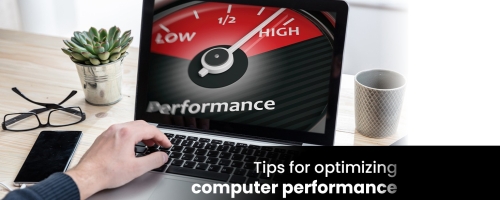Is your PC running slower than it used to? Whether you’re gaming, working, or just browsing the web, a sluggish computer can be frustrating. Fortunately, there are several steps you can take to optimize your PC for faster performance. Here’s a comprehensive guide to help you get your computer running at its best.
1. Uninstall Unused Programs
Start by reviewing the programs installed on your PC. Many users accumulate software that they no longer use, which can take up valuable system resources. Go to your Control Panel or Settings, navigate to “Programs,” and uninstall any applications that you don’t need. This will free up storage space and potentially speed up your system.
2. Disable Startup Programs
Many applications automatically start when you boot your computer, which can significantly slow down the startup process. Use the Task Manager (Ctrl + Shift + Esc) to review and disable unnecessary startup programs. This will help your PC boot up faster and reduce the load on your system’s resources.
3. Update Your Operating System and Drivers
Keeping your operating system and drivers up to date is essential for optimal performance. Updates often include performance improvements and security patches. Check for updates regularly, and ensure that your drivers—especially for graphics and chipset—are the latest versions available.
4. Run Disk Cleanup
Windows includes a built-in Disk Cleanup tool that can help you remove temporary files, system cache, and other unnecessary data. To access it, type “Disk Cleanup” in the Start menu search bar, select your drive, and follow the prompts. This will help free up disk space and improve your PC’s performance.
5. Defragment Your Hard Drive
If you’re using a traditional Hard Disk Drive (HDD), defragmenting it can help organize data and improve access times. Type “Defragment and Optimize Drives” in the Start menu search, select your HDD, and click “Optimize.” Note that this step is not necessary for Solid State Drives (SSDs), as they do not require defragmentation.
6. Increase RAM
If your computer struggles with multitasking or running resource-intensive applications, upgrading your RAM can significantly enhance performance. Determine how much RAM you currently have and consider adding more to improve speed, especially if you use demanding software like video editors or games.
7. Check for Malware and Viruses
Malware and viruses can severely impact your computer’s performance. Use a reliable antivirus program to run a full system scan. If any threats are detected, follow the software’s instructions to remove them. Regularly scanning your PC can help prevent future slowdowns.
8. Optimize Power Settings
Your PC’s power settings can affect performance. Navigate to the Control Panel, go to “Power Options,” and select the “High Performance” plan. This setting prioritizes performance over energy savings, which can lead to a noticeable speed boost during resource-heavy tasks.
9. Upgrade to an SSD
If you’re still using an HDD, consider upgrading to a Solid State Drive (SSD). SSDs are significantly faster than traditional hard drives, leading to quicker boot times, faster file access, and improved overall system responsiveness. While this can be a more expensive upgrade, the performance benefits are well worth it.
10. Perform Regular Maintenance
Regular maintenance is key to keeping your PC optimized. Schedule periodic checks for software updates, run Disk Cleanup, and perform antivirus scans. Consistent maintenance will help ensure your PC remains in top shape and runs smoothly.
Conclusion
Optimizing your PC for faster performance doesn’t have to be a daunting task. By following these steps, you can breathe new life into your computer, making it faster and more efficient. From uninstalling unused programs to upgrading hardware components, every little change can contribute to a better user experience. Take the time to optimize your PC, and you’ll enjoy improved speed and responsiveness for all your tasks.

